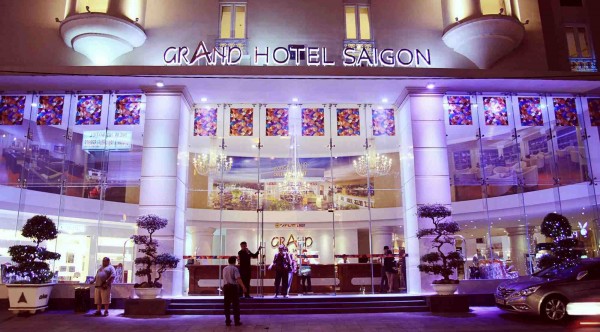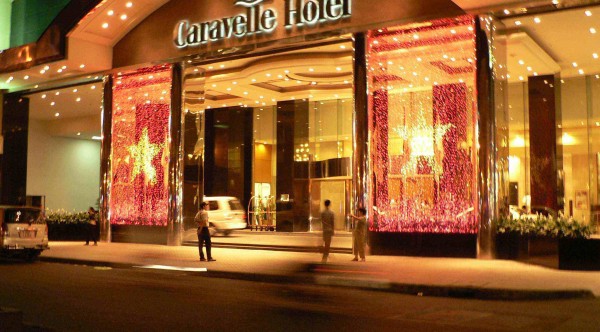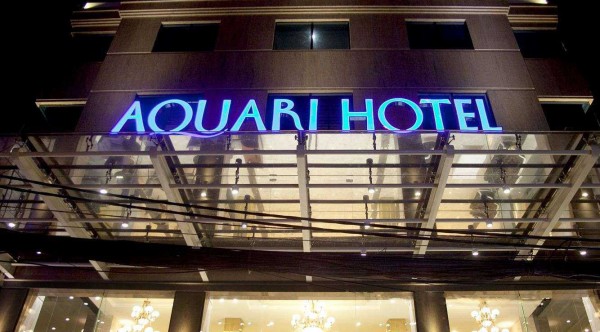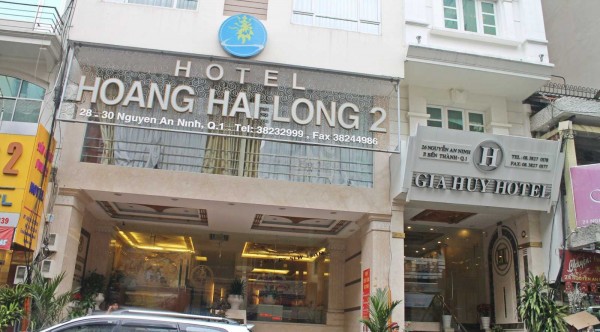
Ho Chi Minh City - Pearl of the Far East

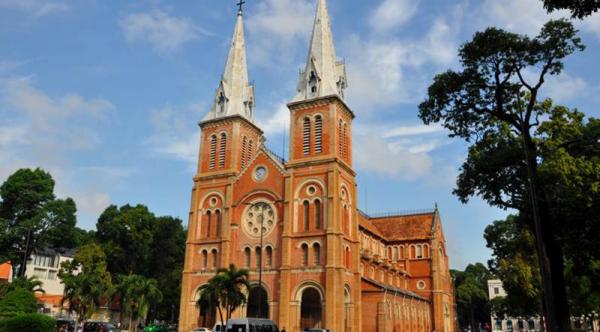
Ho Chi Minh City Tour – Day Trip
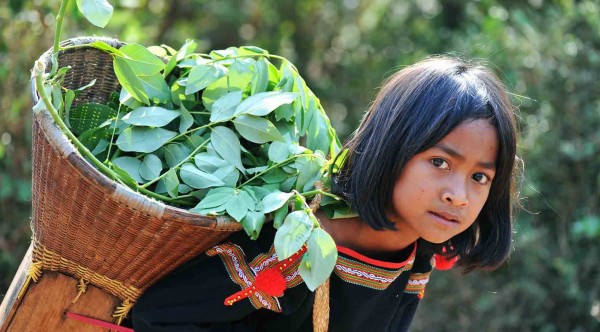
Central Highland Vietnam Photography Tour – 8 Days/7 Nights
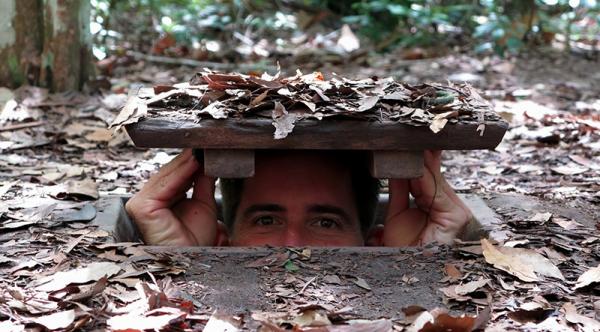
Southern Vietnam Tour – 3 Days/ 2 Nights
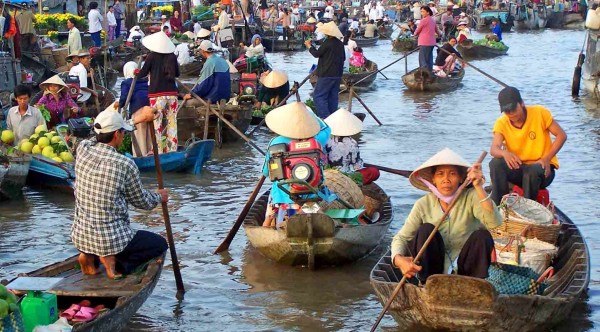
Southern Vietnam Tour – 4 Days/ 3 Nights

Long Tan – Nui Dat & Vung Tau – 2 Days
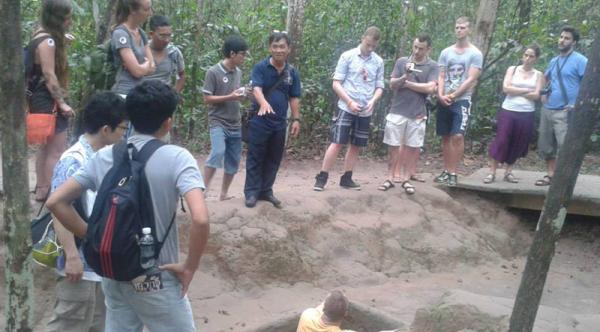
Tour to Cu Chi Tunnel & Cao Dai temple – Day Trip
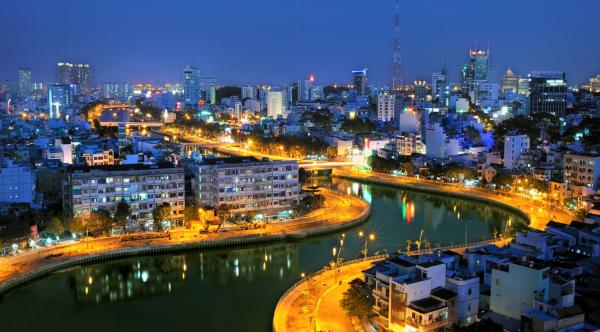
Cu Chi Tunnel Half Day Tour

Mekong Delta – Cai Be Floating Market – Day Trip
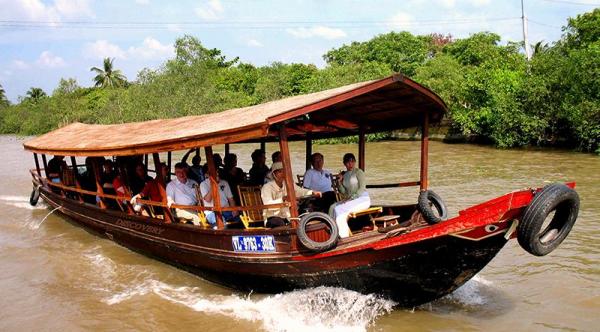
Mekong Delta – My Tho Tour – Day Trip

Saigon – Mekong Delta – Phu Quoc Island Tour – 7 Days/ 6...
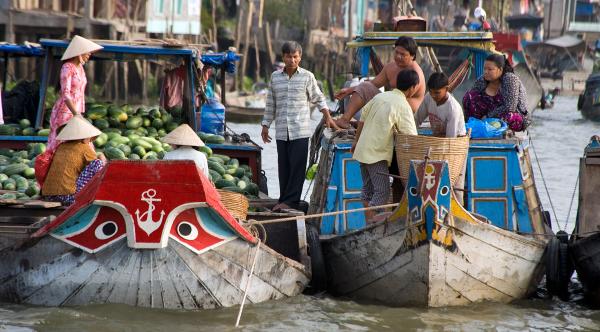
Cai Be Floating Market and Can Tho Tour – 2 Days/ 1 Night
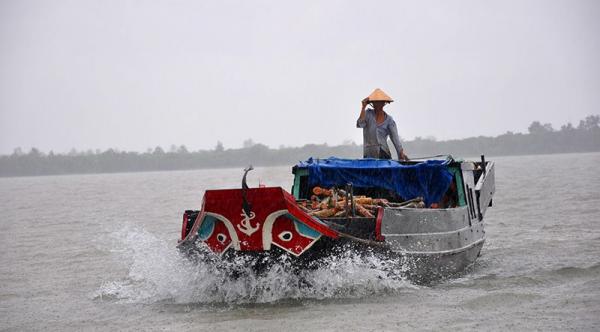
Discovery Mekong Delta River – 2 Days/ 1 Night
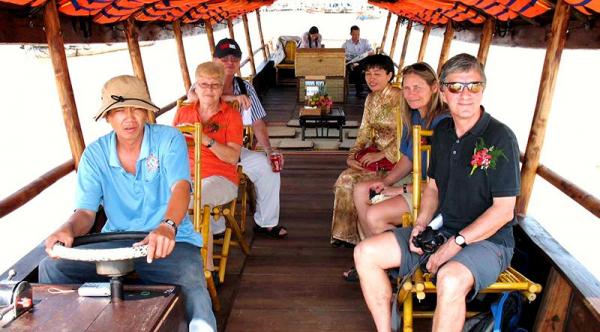
A Glimpse Of Mekong Delta – Escape To Phu Quoc Beach – 3 Days/ 2 Nights
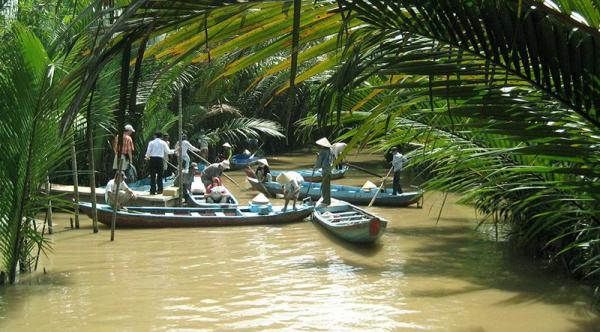
DAILY TRIP MEKONG DELTA ON MEKONG BOAT
Ho Chi Minh City - Pearl of the Far East
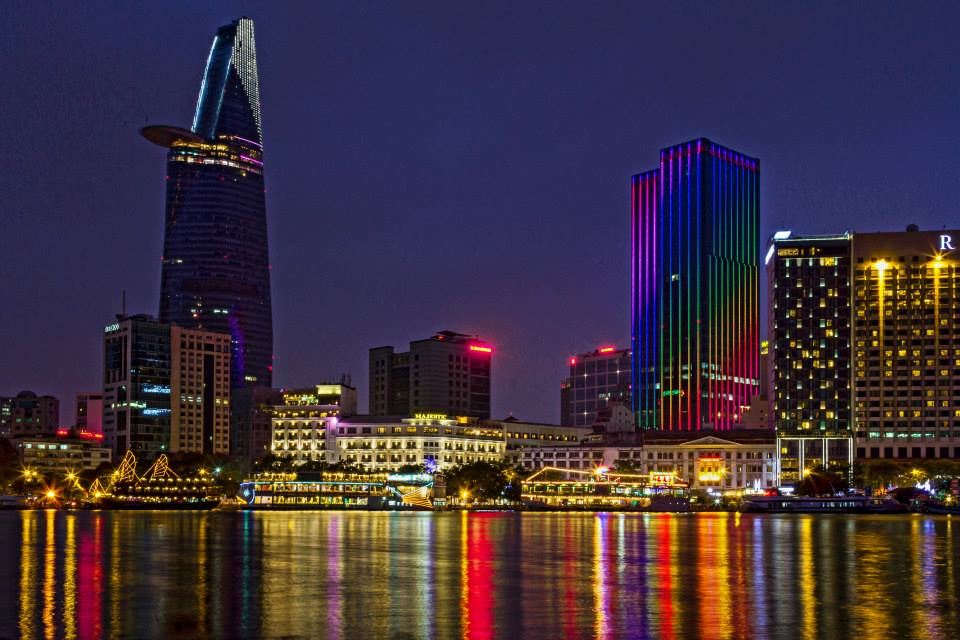
Ho Chi Minh City (HCMC) is Vietnam at its most dizzying: a high-octane city of commerce and culture that has driven the whole country forward with its pulsating energy. A chaotic whirl, the city breathes life and vitality into all who settle here – visitors cannot help but be hauled along for the ride.
From the finest of hotels to the cheapest of guesthouses, the classiest of restaurants to the tastiest of street stalls, the choicest of boutiques to the scrum of the markets, HCMC is a city of contrasts. Wander through timeless alleys to incense-infused temples before catching up with the present in designer malls beneath sleek skyscrapers. The ghosts of the past live on in buildings that one generation ago witnessed a city in turmoil, but the real beauty of (erstwhile) Saigon’s urban collage is the the seamless blending of these two worlds into one thrilling, seething mass, while a host of new and exhilarating tours get you way off-the-beaten track.
When the best time to visit Ho Chi Minh City
The best time to visit Ho Chi Minh City is in the dry season. The region has a tropical climate of the two distinctive seasons. Firstly, dry and then it experiences the wet. It is suggested that visitors should visit the place during the dry seasons so that they can enjoy the fullest. The climate starts from December and it continues to be the same till April. This is known to be the hottest of the year with the average temperature of 28°C (82°F). It may even reach up to 39°C (102°F) in the noon and it is usually found in the late April. But, in the December the temperature may fall to 16°C (61°F) in the morning.
Getting There & Away
Air
Ho Chi Minh City is served by Tan Son Nhat International Airport. The following airlines all fly domestically from HCMC:
– Vietnam Airlines
– Air Mekong
– Jetstar Pacific Airline
Please contact us to book flight ticket.
Car & Motorbike
Travel agencies, hotels and tourist cafes all rent cars (with drivers) and motorbikes. Many expats swear that motorbike rental is the fastest and easiest way to get around the city – or to the hospital, if you don’t know what you’re doing. Note that your travel insurance may not offer cover, so check beforehand as things could get expensive and troublesome in the event of an accident. Even if you’re an experienced biker, make sure you’ve spent some time observing traffic patterns before venturing forth. A 100cc motorbike can be rented for US$7 to US$10 per day, including some sort of helmet, and your passport may be kept as collateral. Before renting one, make sure it’s in good working order.
Saigon Scooter Centre is a reliable source for restored classic Vespa scooters, new scooters and trail bikes. Daily rates start from US$10, with a minimum rental period of four days. For an extra fee it is possible to arrange a one-way service, with a pick-up of the bikes anywhere between HCMC and Hanoi.
Bus
Intercity buses operate from three large stations on the city outskirts, all well served by local bus services from Ben Thanh Market. HCMC is one place where the open-tour buses really come into their own, as they depart and arrive in the very convenient Pham Ngu Lao area, saving the extra local bus journey or taxi fare.
Mien Tay bus station serves all areas south of HCMC, essentially the Mekong Delta. This huge station is about 10km west of HCMC in An Lac, a part of Binh Chanh district (Huyen Binh Chanh).
Buses to locations north of HCMC leave from the huge and busy Mien Dong bus station in Binh Thanh district, about 5km from central HCMC on Hwy 13
Buses to Tay Ninh, Cu Chi and points northwest of HCMC depart from An Suong bus station in District 12.
Plenty of international bus services connect HCMC and Cambodia, most with departures from the Pham Ngu Lao area.
All of these tickets can be booked at the station or at our office.
Train
Trains from Saigon train station head north to various destinations:
Nha Trang (6½ to nine hours, six daily)
Danang (15½ to 20¾ hours, five daily)
Hue (18 to 24½ hours, five daily)
Hanoi (30 to 41 hours, four daily)
In Pham Ngu Lao, purchase tickets from Hoa Xa Agency or from most travel agents for a small fee.
All of these tickets can be booked at the station or at our office.
Taxi
Metered taxis cruise the streets, but it is worth calling ahead if you are off the beaten path. The flag fall is around 15,000d for the first kilometer; expect to pay around 20,000d (US$1) from Dong Khoi to Pham Ngu Lao. Be wary of dodgy taxi meters, rigged to jump quickly.
Mai Linh Taxi and Vinasun Taxi are HCMC’s most highly regarded taxi companies.
Bicycle
A bicycle can be a useful (if sometimes scary) way to get around the city. Bikes can be rented from several outlets, including hotels, cafes and travel agencies.
Sights & Activities
Reunification Palace
Surrounded by Royal Palm trees, the dissonant 1960s architecture of this government building and the eerie mood that accompanies a walk through its deserted halls make it one of the most intriguing spectacles in HCMC. The building is deeply associated with the fall of Saigon in 1975, yet it’s the overblown kitsch detailing and period motifs that steal the show.
Jade Emperor Pagoda
Built in 1909 in honour of the supreme Taoist god (the Jade Emperor or King of Heaven, Ngoc Hoang), this is one of the most spectacularly atmospheric temples in HCMC, stuffed with statues of phantasmal divinities and grotesque heroes. The pungent smoke of incense (huong) fills the air, obscuring the exquisite woodcarvings.
Its roof encrusted with elaborate tile work, the temple’s statues, depicting characters from both Buddhist and Taoist lore, are made from reinforced papier mâché. Inside the main building are two especially fierce and menacing Taoist figures. On the right (as you face the altar) is a 4m-high statue of the general who defeated the Green Dragon (depicted underfoot). On the left is the general who defeated the White Tiger, which is also being stepped on.
War Remnants Museum
Once known as the Museum of Chinese and American War Crimes, the War Remnants Museum is consistently popular with Western tourists. Few museums anywhere drive home so effectively the brutality of war and its many civilian victims. Many of the atrocities documented here were well publicised but rarely do Westerners get to hear the victims of US military action tell their own stories.
Fine Arts Museum
As well as contemporary art, much of it (unsurprisingly) inspired by war, the museum displays historical pieces dating back to the 4th century. These include elegant Funan-era sculptures of Vishnu, the Buddha and other revered figures (carved in both wood and stone), and Cham art dating from the 7th to the 14th century.
More statuary is scattered around the grounds and in the central courtyard (accessed from the rear of the building). There’s a selection of lovely prints for sale at the shop, costing from around 80,000d. Building No 2 alongside hosts lesser known works and stages exhibitions.
Phuoc An Hoi Quan Pagoda
Delightfully fronted by greenery and opening to an interior blaze of red, gold, green and yellow, this is one of the most beautifully ornamented temples in town, dating from 1902. Of special interest are the elaborate brass ritual ornaments and weapons and the fine woodcarvings on the altars, walls, columns, hanging lanterns and incense coils.
Notre Dame Cathedral
Built between 1877 and 1883, Notre Dame Cathedral rises up romantically from the heart of HCMC’s government quarter, facing Ð Dong Khoi. A brick, neo-Romanesque church with two 40m-high square towers tipped with iron spires, the Catholic cathedral is named after the Virgin Mary. The walls of the interior are inlaid with devotional tablets and some stained glass survives. English-speaking staffs dispense tourist information from 9am to 11am Monday to Saturday. If the front gates are locked, try the door on the side of the building that faces Reunification Palace.
Binh Tay Market
Cholon’s main market has a great clock tower and a central courtyard with gardens. Much of the business here is wholesale but it’s popular with tour groups. The market was originally built by the French in the 1880s; Guangdong-born philanthropist Quach Dam paid for its rebuilding and was commemorated by a statue that is now in the Fine Arts Museum.
History Museum
Built in 1929 by the Society des Etudes Indochinese, this notable Sino-French museum houses a rewarding collection of artifacts illustrating the evolution of the cultures of Vietnam, from the Bronze Age Dong Son civilization (which emerged in 2000 BC) and the Funan civilization (1st to 6th centuries AD), to the Cham, Khmer and Vietnamese.
Central Post Office
Right across the way from Notre Dame Cathedral, HCMC’s striking French post office is a period classic, designed by Gustave Eiffel and built between 1886 and 1891. Painted on the walls of its grand concourse are fascinating historic maps of South Vietnam, Saigon and Cholon, while a mosaic of Ho Chi Minh takes pride of place at the end of its barrel-vaulted hall.
Giac Lam Pagoda
Believed to be the oldest temple in HCMC (1744), Giac Lam is a fantastically atmospheric place set in peaceful, garden-like grounds.
Like many Vietnamese Buddhist temples, aspects of both Taoism and Confucianism can be found. For the sick and elderly, the pagoda is a minor pilgrimage sight, as it contains a bronze bell that, when rung, is believed to answer the prayers posted by petitioners.
Eating
Although Hanoi might think of itself as more cultured, HCMC is the culinary heavy-weight of Vietnam. Restaurants here range from dirt-cheap sidewalk stalls to atmospheric villas, each adding a unique twist to traditional Vietnamese flavors.
– Baba’s Kitchen: 164 Bui Vien Street; Worth going out of your way to secure a table, two-storey Baba’s has set Bui Vien alight with its fine flavors, aromas and spices of India.
– Cuc Gach Quan: 10 Dang Tat Street
– Ocean Palace : 2 Le Duan Street
– Pat a Chou: 74 Hai Ba Trung; French-style bakery treats.
– May: 3/5 Hoang Sa; Tucked away down a small alley in an old French villa and overseen by endlessly obliging staff, sublime May is a sensory and culinary sensation, with diners testifying to some of the best Vietnamese food in town, if not the entire country. MSG-free.
– Eon51: 51st floors, Bitexco Financial Tower, 2 Ɖ Hai Trieu; Elevate yourself away from the hectic whirl at street level high up on the 51st floor of HCMC’s tallest tower for a sure-fire combination of supreme food, tantalizing views, impeccable service and stylish ambience.
| Country | vietnam |
|---|



